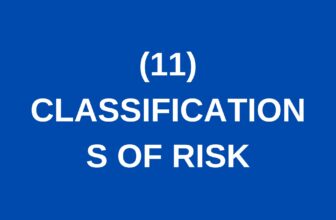12. The Principles of Insurance: Chapter 11 Recap (FREE COURSE)
Welcome to the final chapter of our course, “Principles of Insurance.” This chapter, being the most crucial, delves into the core principles that form the legal and technical foundation of insurance contracts. As we conclude this course, it is vital to understand these principles thoroughly to grasp the essence of insurance.
Understanding the Key Parties
Before we dive into the principles, let’s clarify the main parties involved:
- Insurer: The entity to whom the risk is transferred.
- Insured: The individual or entity transferring the risk to the insurer.
Now, let’s explore the seven fundamental principles of insurance.
1. Principle of Insurable Interest
The principle of insurable interest stipulates that the insured must have a legal and financial interest in the subject matter of the insurance. This relationship ensures that the insured suffers a loss if the insured event occurs.
Example: If you own a car and insure it, the car is the subject matter, and you are the legal owner with a financial interest in it. This ownership and financial interest define your insurable interest.
2. Principle of Utmost Good Faith
This principle mandates both parties in an insurance contract to act honestly and disclose all relevant information. The insured must provide accurate information to the insurer, and the insurer must clearly state the terms and conditions of the policy.
Example: In car insurance, the insured must answer all questions truthfully, and the insurer must explain the coverage, terms, and claim procedures transparently.
3. Principle of Proximate Cause
Proximate cause refers to the primary cause that sets off a chain of events leading to a loss, without the intervention of an independent force. It is the initial cause that triggers the sequence of events resulting in damage or loss.
Example: A high-speed wind causes a tree to fall on a car, leading to a petrol leak that ignites and causes a fire, burning a house. The proximate cause of the house burning is the high-speed wind, as it initiated the chain of events.
4. Principle of Indemnity
The principle of indemnity ensures that the insured is restored to the same financial position they were in before the loss, without profiting from the insurance.
Example: If your house with simple decor and furniture is damaged by fire, the insurer will pay to restore it to its original condition. You cannot claim for better or more expensive items than those lost.
5. Principle of Contribution
This principle applies when multiple insurance policies cover the same subject matter or loss. The total payment for the actual loss is divided proportionally among all insurance companies involved.
Example: If your laptop, covered under both household and travel insurance, is stolen during a trip, both policies will cover the cost. However, the cost is divided between the two policies.
6. Principle of Subrogation
Subrogation allows the insurer, after compensating the insured for a loss, to recover the amount from the party responsible for the damage.
Example: If your insured car is damaged while parked, you can claim the repair costs from your insurer. The insurer can then recover this cost from the party who caused the damage.
7. Principle of Loss Minimization
This principle obligates the insured to take necessary steps to minimize the loss. Negligence or irresponsibility is not permitted simply because one is insured.
Example: If an insured house catches fire, the insured must report the incident and call firefighters. They cannot just wait for the house to burn down completely.
Conclusion
This concludes our comprehensive course on the Principles of Insurance. These seven principles are fundamental to understanding and executing insurance contracts effectively. If you have any questions or need further clarification, please feel free to contact me. I am here to help.
Thank you for your attention throughout this course. Goodbye!





